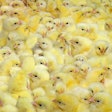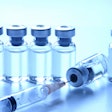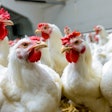
A technology that uses the Internet of Things (IoT) to collect and analyze real-time data can quickly give insights to poultry producers concerning bird health, welfare and performance.
According to Alan Beynon, DVM, CEO, SenseHub Poultry, who presented at the 2023 Poultry Tech Summit, the technology gives producers actionable insights into their business that could help improve profitability, health, welfare and performance on broiler farms.
How it works
IoT works by using the data collected by sensors, software and other technologies to communicate with other networks.
The wireless system sends live data collected by small, battery-operated sensors into a cloud-based analytics platform, which can then be interpreted by specialist vets, nutritionists and other poultry professionals, allowing producers to make on-farm decisions. The sensors can be placed strategically throughout a poultry house.
After the data is sent to the cloud-based platform, variations in the data are highlighted and can be sent to a designated phone, tablet or laptop. The system is customizable and can be designed collect any amount of data requested by the producer.
The analyzed data is displayed as graphs and charts and helps producers be more informed about their process. The results can help producers make decisions to improve aspects such as air pressure, humidity, temperature, CO2 levels, bird weight and water consumption, Beynon explained. Additionally, with a separate system for each house, producers can compare performance results and improve their consistency between flocks.
Also, Beynon added that the charts and graphs allow companies to identify fluctuations in bird performance quickly, giving producers time to address potential health concerns before they have a large impact on the flock.
Beynon said the technology reduces the amount of manual data entry and removes the possibility of human error during collection. Also, it reduces the need for non-essential farm visits, which can be particularly helpful during a disease outbreak.


















